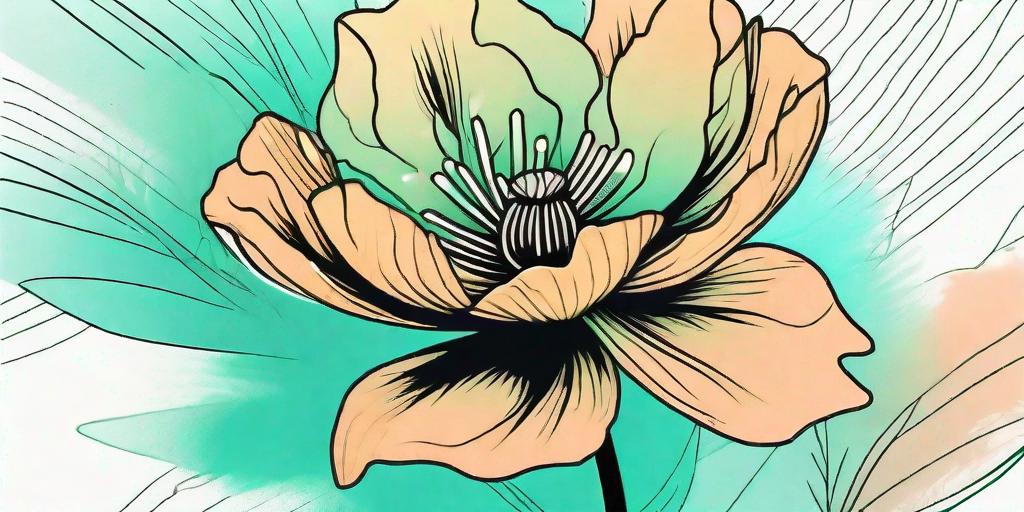
In the vast and colorful world of flora, few flowers can rival the charm and allure of the Amapola. Known scientifically as Papaver rhoeas, this vibrant red flower has been enchanting botanists, gardeners, and flower enthusiasts alike for centuries. But what is it about the Amapola that makes it so captivating? Let's dive in and find out!
The Amapola: A Brief Introduction
Often mistaken for a poppy, the Amapola is a species all its own. Native to the Mediterranean region, it has since spread across the globe, bringing its fiery red petals to gardens and wildflower fields alike. With its delicate, papery petals and striking black markings, the Amapola is a sight to behold.
But the Amapola is more than just a pretty face. It's a hardy plant, capable of thriving in a variety of climates and conditions. This resilience, combined with its undeniable beauty, has made it a favorite among gardeners worldwide.
Amapola in History and Culture
The Amapola has a rich and storied history. In ancient times, it was associated with the goddess Demeter and was used in rituals to ensure a bountiful harvest. In more recent times, the Amapola has become a symbol of remembrance for fallen soldiers, a tradition that began after World War I.
Today, the Amapola continues to hold a special place in many cultures. In Spain, for example, the flower is celebrated in the famous song "Amapola," which has been covered by numerous artists over the years.
How to Grow Amapola Flowers
Now that we've covered the basics, let's get down to the nitty-gritty: how to grow your own Amapola flowers. Don't worry, it's not as daunting as it might seem. With a little patience and care, you can have a garden full of these radiant beauties in no time.
First things first, Amapola seeds should be sown directly into the ground in late fall or early spring. The plants prefer full sun and well-drained soil, but they can tolerate partial shade and less-than-ideal soil conditions.
Planting Amapola Seeds
When planting Amapola seeds, it's important to remember that they are very small and lightweight. This means they should be sown shallowly, no more than a few millimeters deep. After sowing, water the area thoroughly and keep the soil moist until the seedlings emerge.
Once the seedlings have sprouted, they can be thinned out to allow for better growth. Amapola plants are quite hardy and can withstand thinning without any adverse effects.
Caring for Amapola Plants
Amapola plants are relatively low-maintenance. They don't require much watering, and they're resistant to most common garden pests. However, they do benefit from regular deadheading to encourage more blooms.
As for fertilizing, Amapola plants don't need much. A light application of a balanced fertilizer in the spring should be sufficient. Over-fertilizing can actually harm the plants, causing them to produce more leaves and fewer flowers.
Amapola Flowers: Uses and Benefits
Aside from their aesthetic appeal, Amapola flowers have a number of uses and benefits. They have been used in traditional medicine for centuries, and they can also be used in cooking and baking.
In terms of medicinal uses, Amapola flowers are known for their sedative and analgesic properties. They have been used to treat a variety of ailments, including insomnia, anxiety, and pain.
Amapola in the Kitchen
Did you know that Amapola flowers are edible? That's right, these vibrant blooms can be used to add a pop of color and a subtle, sweet flavor to a variety of dishes. They can be used in salads, desserts, and even beverages.
However, it's important to note that only the petals are edible. The rest of the plant, including the seeds, is not safe to consume.
Amapola in Traditional Medicine
In traditional medicine, Amapola flowers have been used to treat a variety of ailments. The petals are known for their sedative properties and have been used to treat insomnia and anxiety. The seeds, meanwhile, have been used to relieve pain and inflammation.
While these traditional uses are fascinating, it's important to note that more research is needed to fully understand the medicinal properties of Amapola flowers. Always consult with a healthcare professional before using any plant for medicinal purposes.
FAQs about Amapola Flowers
- Are Amapola flowers the same as poppies?
No, while they are often mistaken for poppies, Amapola flowers are a different species. They are both part of the Papaveraceae family, but they are not the same plant.
- Can I grow Amapola flowers in my garden?
Yes, Amapola flowers are relatively easy to grow and can thrive in a variety of conditions. They prefer full sun and well-drained soil, but they can tolerate partial shade and less-than-ideal soil conditions.
- Are Amapola flowers edible?
Yes, the petals of Amapola flowers are edible and can be used in a variety of dishes. However, the rest of the plant, including the seeds, is not safe to consume.
Conclusion
So there you have it, a comprehensive guide to the blooming beauty that is the Amapola flower. From its vibrant red petals to its rich history and myriad uses, it's no wonder this flower has captivated people for centuries.
Whether you're a seasoned gardener looking to add a pop of color to your garden, or a flower enthusiast eager to learn more about the world of flora, the Amapola is a flower worth discovering. So why not give it a try? Who knows, you might just fall under the Amapola's enchanting spell, just like countless others before you.















